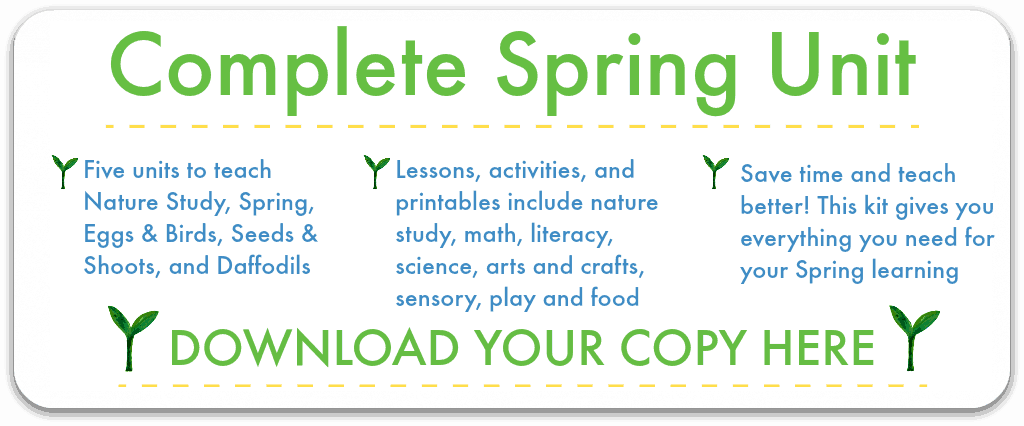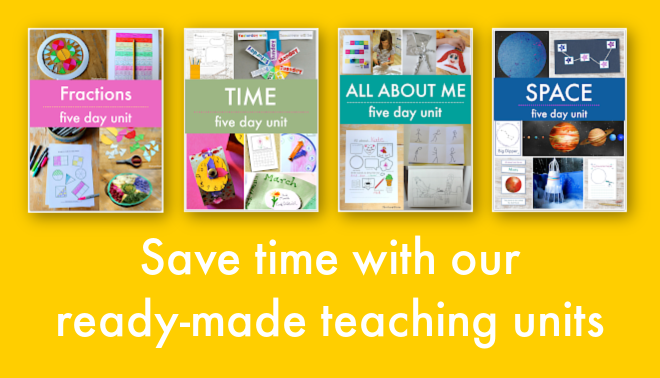In this spring lesson plan you can learn about the seasons and why we have them. We’ll think about what happens in spring and you can print a mini seasons book.
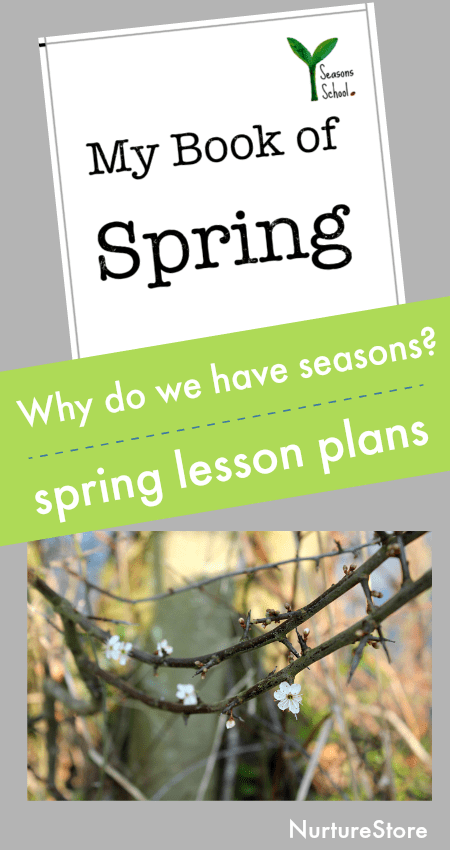
Why do we have seasons? :: spring lesson plan
A seasonal story of a celestial dance
There are three main characters in our seasonal story: the Sun, the Earth and our Moon. All three dance around together in a daily, monthly, seasonal and annual cycle. The Moon moves around our Earth each day. And together the Moon and our Earth move all the way around the Sun, over the course of the year.
The way the Sun, Earth and Moon dance around together gives us our day and night; our spring, summer, autumn and winter; and the cycle of the natural year.
It takes 365 days for the Earth to travel around the sun – one year. During this year, as the Earth moves around the sun, we have our seasons: spring, summer, autumn, winter.
One important thing to know is that the Earth is tilted. As it moves around the sun it doesn’t sit straight upright with the North Pole exactly at the top and the South Pole exactly at the bottom. Instead, it leans to one side a little. This tilt is very important, because it means at certain times of the year more of one part of the Earth is facing the sun than at other times. This tilt gives us our seasons.
In our Winter Curriculum we learned that in December the northern part of Earth is titled furthest away the sun, and this means we get the least hours of sunshine – giving us long nights and the shortest day of the year. It’s when people living in the northern part of Earth have winter.
In March, the Earth has moved further around the sun, and now the tilt means that the sun is facing right at the middle of the Earth. The rays of the sun are shining on the northern and southern parts of the Earth equally. This means we get about the same number of hours of day time and night time. We call this time of year spring, and the day of the year when we have the most equal day and night is called the Spring Equinox. This year that day is on March 20th.
After the Spring Equinox the tilt of the Earth means we will get a little bit more of the sun’s rays shining on our part of the world each day. The days will get longer, and the nights will get shorter, all the way through to the longest day of the year at the Summer Solstice in June. We’ll learn more about this in the Summer Workshop.
People living in the southern hemisphere have their seasons at the opposite time of year to us, so when we are having spring, they are having autumn.
Watch this video to see the movement of the Earth around the sun.
You might like to track what time the sun sets each day this week. Does it get later or earlier each day?
I Wonder What Happens in Spring?
What happens in spring where you live?
What do you notice happening in your garden or in the woods?
What foods do you see in the market?
What are the bird and insects and other wild animals doing at this time of year?
We’re going to be learning about spring all through our spring unit, focusing on daffodils, eggs and birds, and plants and shoots. We’ll also use our nature walks to look out for signs of the coming spring.
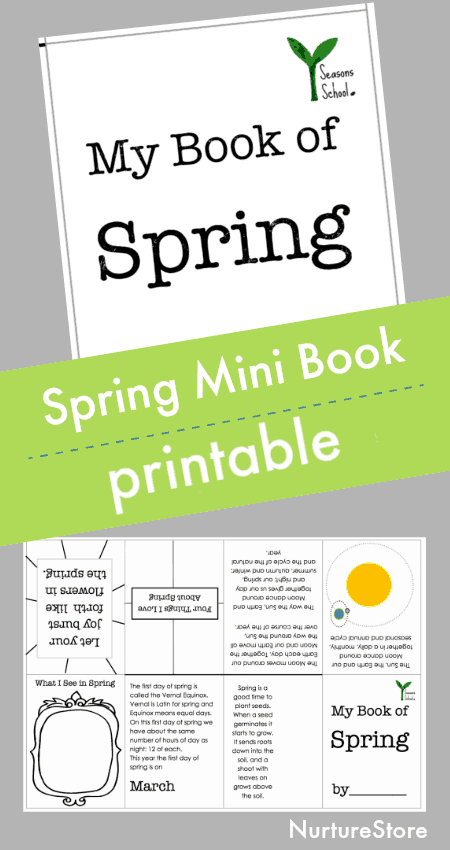
My Book of Spring
You can print the spring mini book from the Seasons School Spring Curriculum and add it to your nature journal to remind you what you have learned today.
In the mini book you can:
:: re-cap keys points about the Earth, Sun and Moon, and the spring
:: journal the things you love about spring
:: add your own illustrations
How to make the mini book
The mini book will fold up into a pop-out/French fold book. It’s easier than it sounds, and you can use this video as a visual guide. You need to fold and cut it out as follows:
1. Print off the mini book pdf.
2. Cut out all the way around the outside rectangular edge of the book, to trim off the white edge.
3. Fold your book along the light grey lines to divide the printable between the pages.
4. Cut a slit along the black line in the centre of the printable.
5. Fold your book in half along the long central line, and then fold the pages. As you do so, pull the inner pages out, giving you your folded book.
6. You can read your book and add your own notes and illustrations to it. You can stick a pocket into your nature journal and keep your mini book inside.
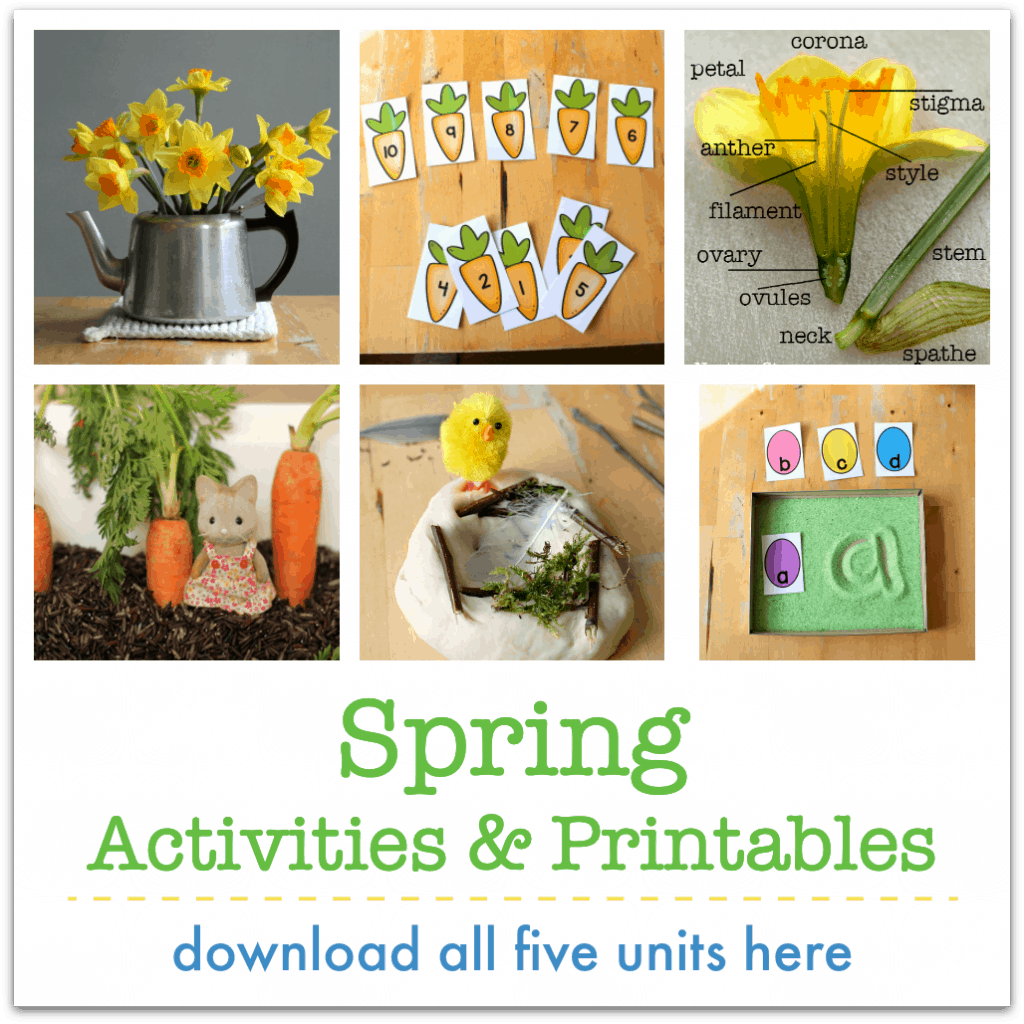
Download all the Spring units and printables
Download our complete Spring lesson plans, activities and printables and your spring teaching will be so easy!
:: five complete units of ebooks and printables for Nature Study, Welcome Spring, Daffodils, Seeds and Shoots, and Eggs and Birds
:: over 50 engaging activities and lesson plans that your children will love
:: over 30 pages of printables that make teaching so easy
:: a balanced programme of math, science, literacy, arts and crafts, nature study, sensory and imaginative play
:: a practical resource that you can start using today, in class or at home
:: weeks worth of learning all planned for you, to take you right through the season
:: created with children aged 4 to 8 in mind
You're going to love this super useful resource!
CLICK HERE to see more and get your spring resource kit.
